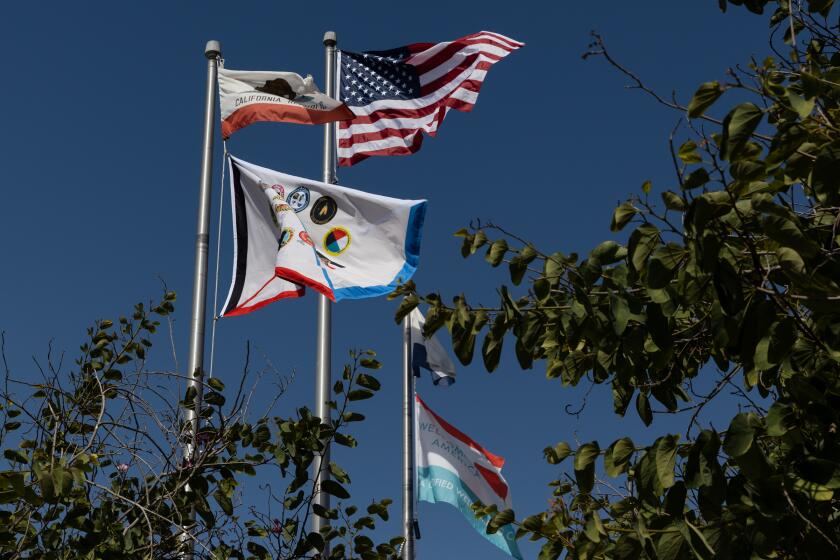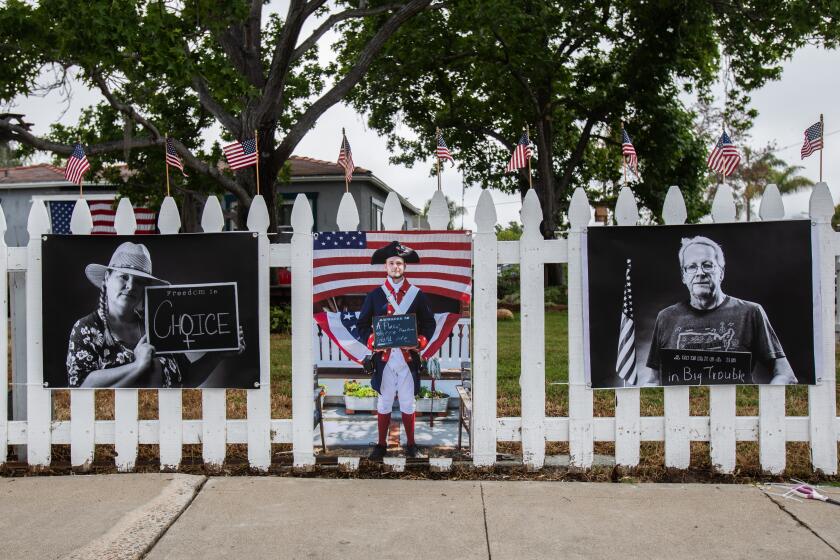Peterson case reignites spanking debate
To spank or not to spank?
The felony child-abuse case against football star Adrian Peterson for whipping his 4-year-old son with a tree branch has reignited the decades-old debate about corporal punishment in America and drawn attention to efforts to ban it.
It’s already outlawed, even in the privacy of homes, in almost 40 countries, including Germany, Israel, New Zealand, Spain and Kenya.
In the U.S., though, it remains in wide use. About 94 percent of parents of childen ages 3 to 4 report having spanked their kids in the previous year, according to the Child Trends Data Bank.
And while surveys show a general downward trend in the acceptability of spanking in this country — from 84 percent in the mid-1980s to roughly 70 percent today — there are significant segments of the population who believe that sparing the rod is spoiling the child.
“Our culture condones spanking as a traditional parenting practice,” said George Holden, a psychology professor at Southern Methodist University in Texas who is president of a fledgling group called the U.S. Alliance to Stop the Hitting of Children.
“People say that spanking was done to them by their parents, and they loved their parents. They think they turned out OK, so why not use it on their own children? That’s what keeps it going.”
Spanking already is illegal in day-care centers in all but a couple of states. Fewer than 20 states still allow it in public schools, which means the annual number of students getting paddled has dropped from about 1.5 million in 1976 to about 200,000.
But getting it abolished in private homes, in a country historically suspicious of Big Brother, is another matter. A 2007 bill in California that would have prohibited spanking any child under the age of 4 went nowhere. Same with legislation four years later in Maryland that would have narrowed what constituted “reasonable corporal punishment.”
Now some are wondering if all the outrage swirling around Adrian Peterson might change the equation.
Drawing a line
Many observers draw a distinction between what Peterson is accused of doing — hitting his son with a “switch” that left cuts, slash marks and bruises on several areas of the boy’s body — and the traditional definition of spanking: smacking a child on the bottom with an open hand.
“When you’re causing bleeding, when you’re leaving scars, that’s a very, very obvious line that shouldn’t be crossed,” said Robert Fellmeth, a lawyer who heads the Children’s Advocacy Institute at the University of San Diego. “You cause that kind of injury, you’re a child abuser.”
But Fellmeth is also a parent, “and I believe there are circumstances where an openhanded whack on the fanny is advised.” He remembers one time when his 4-year-old son darted into the street and he spanked him.
“You use an open hand and he’ll feel it,” Fellmeth said. “But that’s the line to me. You’re trying to deter misbehavior, not cause injury. Do timeouts otherwise.”
Focus on the Family, the influential Christian multimedia ministry founded by child psychologist James Dobson, author of “Dare to Discipline,” draws a similar line.
“Regardless of the method, the Bible’s word on discipline clearly demands that parents be responsible and diligent in spanking, but strongly prohibits physical abuse of any kind,” the organization says on its website.
Support for spanking in the U.S. runs especially high among evangelical Christians, at about 80 percent, according to a recent study by the data-analysis website FiveThirtyEight.
Within religious organizations, however, there is disagreement about the method of spanking. Some read literally the Bible’s language about using a “rod” to discipline a wayward child.
“When you spank, use a wooden spoon or some other appropriately sized paddle and flick your wrist,” Focus on the Family says. “That’s all the force you need. It ought to hurt — an especially difficult goal for mothers to accept — and it’s OK if it produces a few tears and sniffles. If it doesn’t hurt, it isn’t really discipline, and ultimately it isn’t very loving because it will not be effective in modifying the child’s behavior.”
How effective is it?
Not very, according to academic studies.
‘Negative outcomes’
Elizabeth Gershoff is an associate professor in the School of Human Ecology at the University of Texas at Austin who researches the impact of parental discipline.
Her conclusion after reviewing hundreds of published social-science studies: “Spanking is a form of violence against children that should no longer be a part of American child rearing.”
That doesn’t mean every study condemns the practice. In 2001, for example, researchers from U.C. Berkeley analyzing data gathered from more than 100 middle-class families said occasional, mild spankings are OK and don’t create lasting harm into adolescence.
Gershoff’s evaluation found little research evidence that spanking improves children’s behavior in the long term, and substantial evidence that spanking, especially repeated spanking, makes it more likely children will be defiant and aggressive in the future.
She’s also concluded that spanking puts children at risk for “negative outcomes,” including increased mental health problems. She’s most disturbed by research showing a link between spanking and physical abuse.
“The difference between the two is often degree (duration, amount of force, object used) rather than intent, as most documented cases of physical abuse begin with parents physically punishing their children for a perceived misdeed,” she wrote in a recent paper. “Reducing parents’ use of spanking may go a long way toward reducing the number of children who suffer physical abuse each year.”
One San Diego case from 2006 illustrates the problem. A 30-year-old Camp Pendleton Marine with no history of domestic violence confronted his 11-year-old son about a bad report card. “You must think I am weak because I don’t spank you,” the father said, according to court records.
He then beat the boy about 20 times with a belt and was arrested. Originally charged with felony child abuse, he pleaded guilty to misdemeanor assault and was sentenced to probation for three years.
Another local case a decade earlier ended even more tragically. An Oceanside mother arguing with her 12-year-old son about undone chores took off her shoe to spank him on the backside. He hid behind a blanket, and the heel struck him behind the right ear, causing a tiny skull fracture and internal bleeding. He died the next day.
Prosecutors considered charging the mother with involuntary manslaughter, but eventually decided she didn’t intend to harm her son. There were no prior abuse incidents, they said. The case was dropped.
The research by Gershoff and others has persuaded professional medical associations representing pediatricians, nurses and social workers to adopt recommendations in recent years advocating discipline other than spanking.
Two major religious denominations, the Presbyterians and the Methodists, have also passed resolutions opposed to a practice that some believe is probably as old as childhood itself.
Get Essential San Diego, weekday mornings
Get top headlines from the Union-Tribune in your inbox weekday mornings, including top news, local, sports, business, entertainment and opinion.
You may occasionally receive promotional content from the San Diego Union-Tribune.










